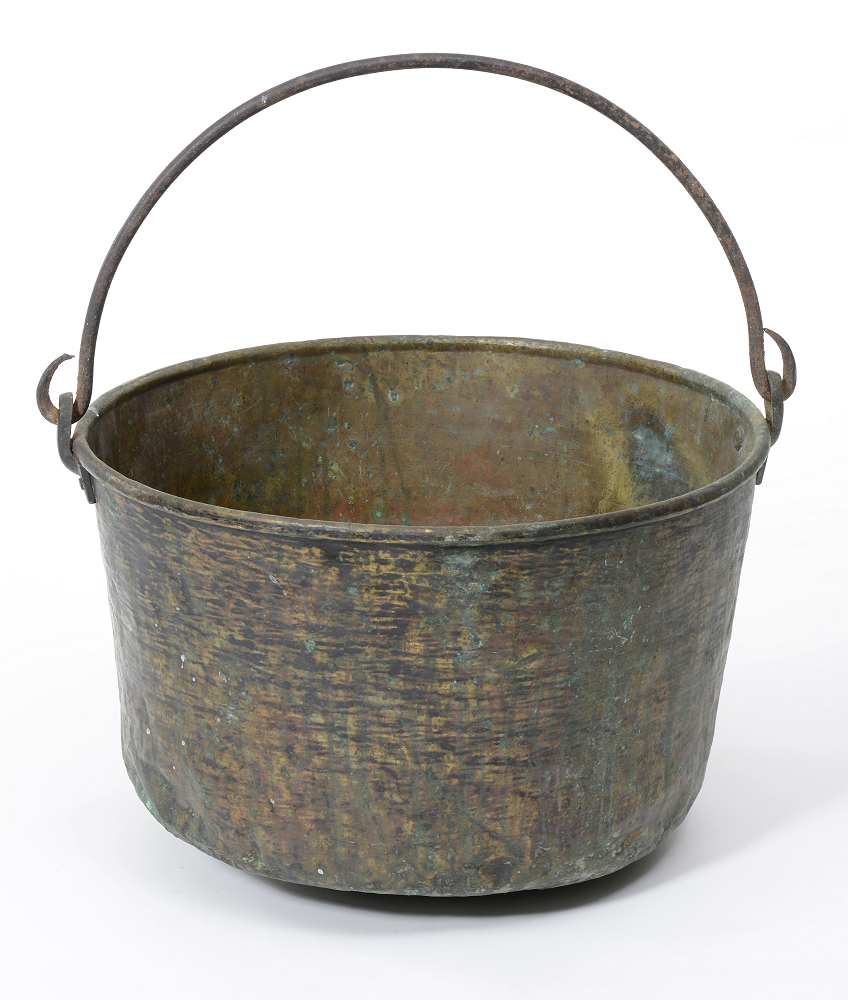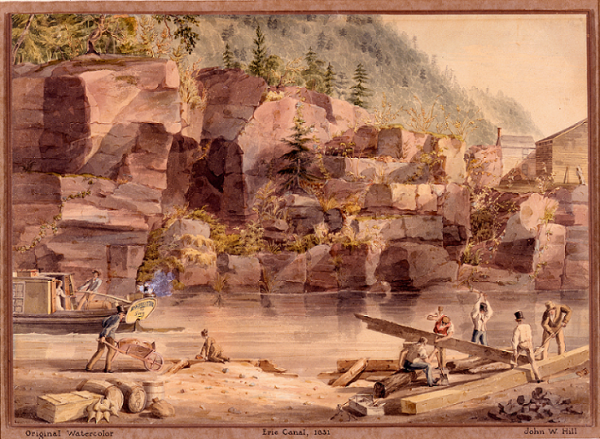Background
As the country expanded west, cross-country travel became increasingly challenging. All the major rivers in the United States flow north to south, so the only way to travel west was over land. These journeys took a long time and were very expensive. But western farmers needed a way to get their crops back east so they could be sold on the international market.
In 1817, the state of New York began to build a canal that would allow barges to sail between the Hudson River and Lake Erie. Engineers invented a way to move the barges over the mountains of western New York. Immigrants were hired to do the hard labor of digging and constructing the canal.
The Erie Canal opened in 1825. It immediately transformed transportation in the United States. The cost of shipping goods from the west dropped from $100 a ton to under $9. Within a few years, the annual value of goods traveling the canal was $15 million. The Erie Canal was an engineering marvel, and it secured New York State’s place as the center of U.S. trade.
About the Image
These two sources illustrate some of the ways women were involved in the construction and business of the Erie Canal. The brass kettle was owned by Christine Davis. Christine was employed as a cook who made meals for the men constructing the canal. Her kettle is 12 inches tall and 17 inches across. She had it specially made so she could cook and serve many people at once. When construction on the Erie Canal was complete, Christine moved to Ohio to work for a company that was building a new canal. It is possible that her husband was also a canal worker, and they moved to wherever the next project was happening together.
John William Hill made this painting shortly after the Erie Canal opened. It shows two ways women were involved in the business of the canal. In the center of the painting, a woman is kneeling to collect water in a pot. She appears to be a cook preparing a meal for the men who maintain the canal. On the barge is another woman dressed in white. It is possible that she lives with her family on a canal barge, traveling up and down the Erie Canal to trade goods and deliver mail to the communities that formed along the canal. It is also possible that she is a passenger heading west. The Erie Canal was a popular mode of transportation for both settlers and tourists.
Vocabulary
- canal: A waterway constructed by humans.
- barge: A flat-bottom boat that can carry heavy loads.
- Hudson River: A river in the state of New York that flows from Albany to New York City.
- Lake Erie: One of the five great lakes. Lake Erie borders western New York State.
Discussion Questions
- What kind of work did women do along the Erie Canal?
- What do you think it was like to cook a meal with Christine Davis’s large brass pot?
- Why is it important to acknowledge that women contributed to public works like the Erie Canal?
Suggested Activities
- Teach these resources during any lesson about the construction and opening of the Erie Canal.
- After examining Christine Davis’s brass pot, invite students to explore American Cookery to learn about what kind of food Christine may have been preparing.
- For a larger lesson about the jobs available to women in the early United States, combine these sources with any of the following: Mill Girls, Diary of a Midwife, Life Story: Almira Hart Lincoln Phelps, Life Story: Charity and Sylvia, and Life Story: Eliza Brock.
Themes
WORK, LABOR, AND ECONOMY








